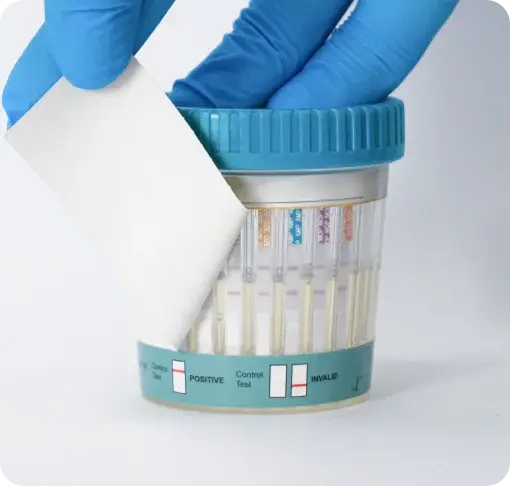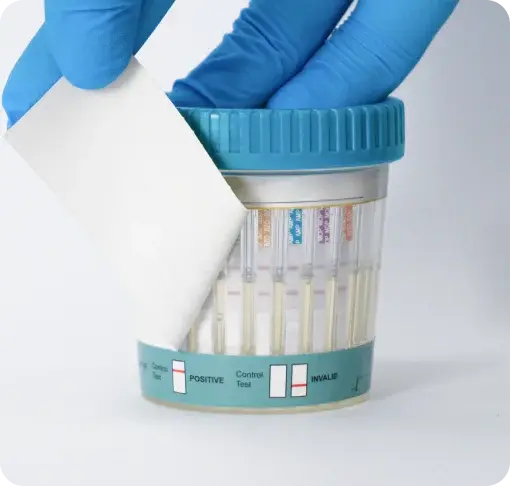- Laboratory Services
Secondary validation for
“non-negatives”. - Point of Care Testing
Urine and oral fluid tests to administer at your location. - Sample Collection Services
Work with our experienced team, anywhere in the UK. - Breath Alcohol Testing
Immediate results for alcohol consumption. - Blood Borne Virus
Screen for HIV, HBsAg, Hepatitis C and Syphilis. - Training
Train with our team, test with confidence.
Why Alcohol Testing Is Crucial for a Safer, Smarter Workplace
Workplace safety doesn’t just depend on helmets and hazard signs — it hinges on responsible behaviour. That’s why breath testing for alcohol is becoming a vital part of health and safety policies, especially in safety-critical industries like construction, manufacturing, and logistics.
At AttoSure’s recent webinar, our experts walked employers through everything they need to know about alcohol breath testing, including common myths, real-world case studies, and why investing in the right equipment can make or break your policy.
How Long Can Alcohol Be Detected in Breath?
Let’s start with the most Googled question:
How long does it take for alcohol to leave your system before a breath alcohol test?
Generally, alcohol can be detected in breath for up to 12–24 hours after consumption, depending on factors like body weight, how much was consumed, and metabolism rate.
That leads to another common question:
Can a breathalyser detect alcohol after 24 hours?
The answer? Not typically. While it's rare, certain slow metabolisers or heavy binge drinkers could theoretically show trace readings, but for most people, breath alcohol is undetectable after 24 hours.
How Long Does Alcohol Stay in Your System – Breathalyser UK Standards
In the UK, alcohol can typically be detected on a breathalyser for up to 12 to 24 hours after drinking, depending on several factors like the amount consumed, your body weight, metabolism, and overall health.
However, unlike drug testing — where detection windows can last days — breath testing only detects current or recent intoxication, not past usage. This makes it ideal for workplace safety, where the focus is on real-time fitness for duty.
It’s also important to note that UK workplace testing standards often use stricter alcohol limits than the legal drink-drive threshold, especially in safety-critical industries.
To maintain accuracy, always observe a 10–15 minute ‘nil by mouth’ period before testing to avoid false positives from substances like mouthwash, chewing gum, or food residue.
Breathalyser vs. Urine Test for Alcohol
When comparing breathalysers and urine tests for alcohol, each has its place.
Breath testing is ideal for real-time, on-the-spot detection of current intoxication. It’s quick, hygienic, difficult to tamper with, and—when followed by a second confirmatory reading after 10–15 minutes—provides a legally defensible result.
Urine testing is better suited to identifying alcohol use over a longer detection window, such as the past 1–5 days. However, it doesn't indicate current impairment. There are two types:
- POCT urine tests give a rapid result but have limited legal weight.
- Back-to-lab urine testing (for markers like EtG) is more robust and can support abstinence monitoring, especially in zero-tolerance roles like offshore, rail, or aviation.
Oral fluid tests for alcohol are limited. Unlike urine or breath, they cannot be confirmed in a UK lab. This is a major drawback of using POCT devices that rely on a simple colour change to flag a positive.
In our webinar, we shared the case of a major UK car manufacturer that learned this the hard way. They relied on an oral fluid strip to screen for alcohol. When a donor tested positive, they attempted to send the sample to a lab for confirmation—only to discover no such service exists. The result couldn’t be upheld, and the employee returned to work.
Their takeaway? They switched to breath testing, which provided a quantifiable result and a clear protocol. If over the policy limit, the test is repeated after 15 minutes to confirm. This dual-step approach makes breath testing far more reliable and enforceable for alcohol detection in the workplace.
Direct vs Passive Breath Testing – Which is Best?
We explored two breath testing modes in the webinar:
- Direct testing provides a quantitative result — a precise blood alcohol concentration (BAC) reading. If the initial result exceeds your company’s policy limit, a second test is conducted after a 10–15 minute ‘nil by mouth’ period to confirm the result. This two-step approach helps eliminate false positives (e.g., from mouthwash) and ensures fair, policy-compliant outcomes.
- Passive testing, on the other hand, uses a simple positive/negative result to detect the presence of alcohol, but not the level. It involves blowing into a passive cup without mouth contact. While some organisations favour it due to reusable mouthpieces, it has a major drawback: a positive result must be followed by a direct test, and if that direct test is over the policy limit, a second direct test is still required. That means potentially conducting three tests for one person.
Our expert Brandon’s verdict? Direct testing is more reliable, faster, and better aligned with workplace policy enforcement. It avoids unnecessary repetition and the complications that come with interpreting a chain of mixed test results. In short, fewer steps, fewer disputes.
Quiz Yourself: Would You Pass a Breath Testing Knowledge Check?
Here are two fun and informative questions taken straight from our live training session:
1. True or False: Will mouthwash impact my breathalyser test results?
Answer: True.
Mouthwash can contain alcohol and produce a false high reading. Always observe a 10-minute nil by mouth period before testing.
2. True or False: Will putting a penny in your mouth cheat a breathalyser?
Answer: False.
This is a myth. A penny in the mouth has no impact on the accuracy of a professional breathalyser.

How well did you do? Want to test yourself more?
Take our full quiz to test your knowledge on drug and alcohol testing in the workplace.
Don’t Guess — Test. Get Started Today.
Whether you're refreshing your substance policy or rolling out a new testing program, AttoSure provides trusted breathalyser testing and full-service workplace drug and alcohol screening.
Contact AttoSure today to speak with our team about your workplace testing needs. Take the quiz to assess your team's readiness on alcohol and drug testing procedures.
Request a Quote

